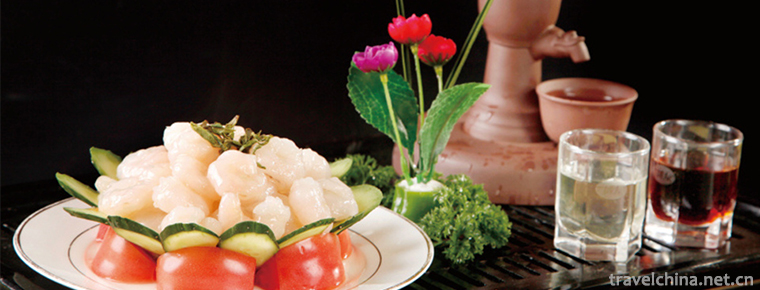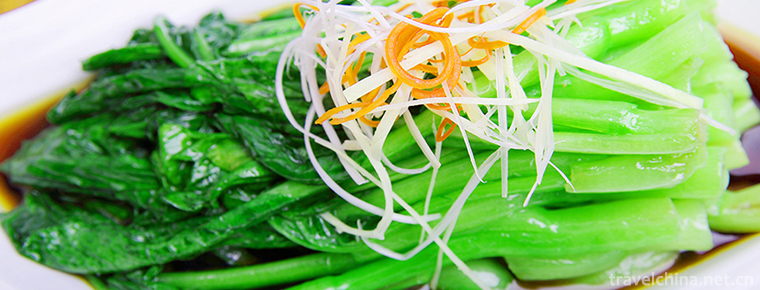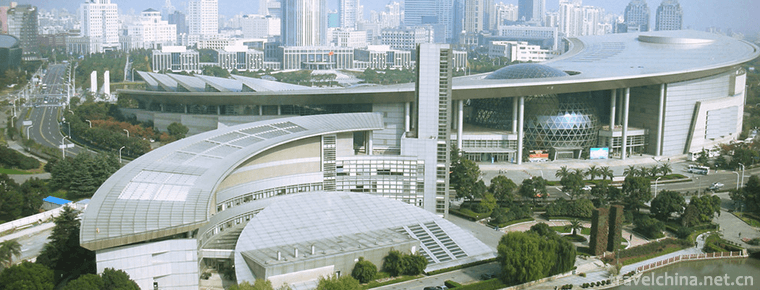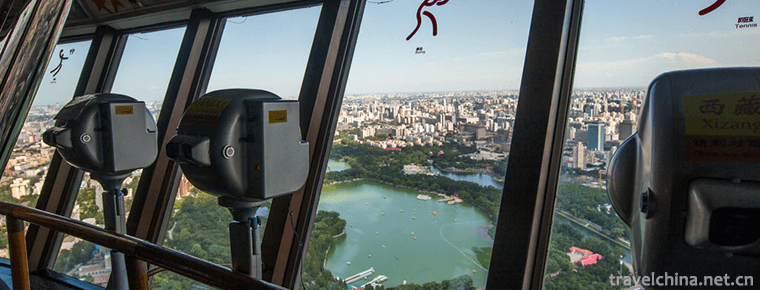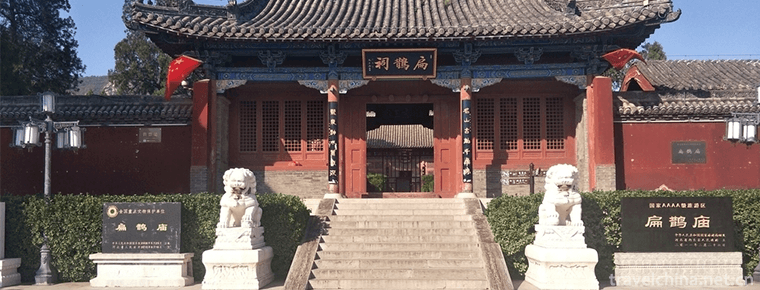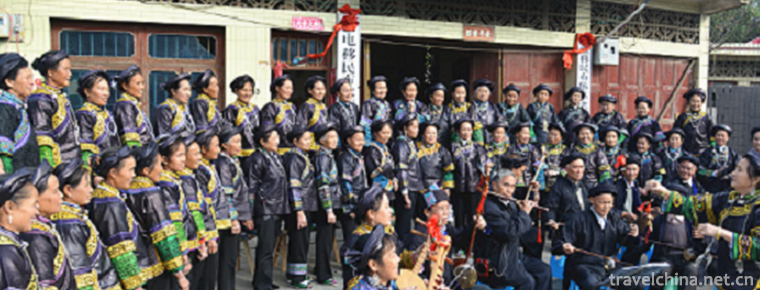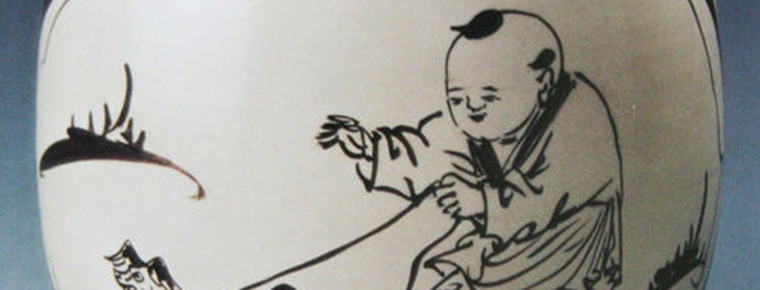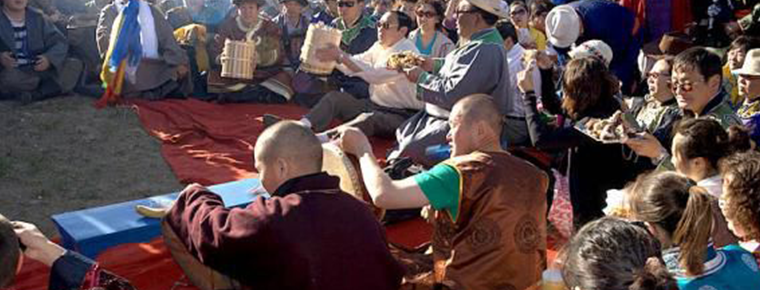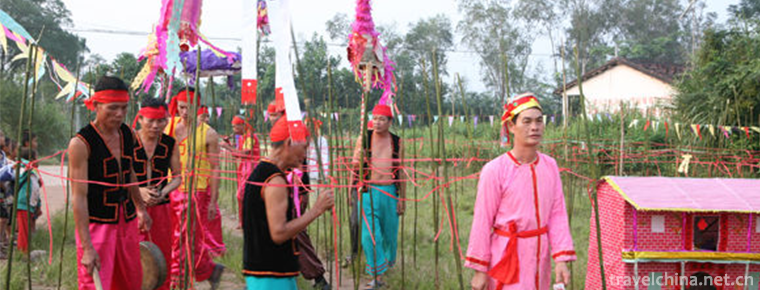Sacrifice to Emperor Shun
Sacrifice to Emperor Shun
Modern Shun Emperor Mausoleum sacrificial activities take the theme of "respecting ancestors and patriotism, inheriting civilization, uniting people's hearts and promoting development". The sacrificial rituals not only maintain the traditional sacrificial ceremony, but also add modern flower basket, bowing ceremony, folk literature and art performances. The whole sacrificial ceremony is divided into welcoming ceremony, guiding ceremony, sacrificial ceremony, worship ceremony, memorial ceremony and memorial tablet uncovering ceremony, which not only inherits history, but also keeps pace with the times, and appears solemn and full of local characteristics.
On May 23, 2011, Emperor Shun's sacrifice was approved by the State Council to be included in the third batch of national intangible cultural heritage list.
Introduction to Emperor Shun
Mencius: "Born in Zhufeng, moved to Negative Xia, died in Ming Tiao, the people of Dongyi are also."
Legend has it that the eyes have double pupils and are named "Chonghua". Emperor Shun was born in 2277 BC and died in 2178 BC. After death, Zen was in Yu. In Historical Records, Shun's name was highly valued, while Huang Fu's tranquility in Jin Dynasty also said that his characters were all monarchs. Shun, also known as Yushun, is said to be the national name Youyu. The image of Shun Emperor (17 pieces) is called Youyu according to the custom of taking the state as the clan in the pre-Qin period. Shun was born in Yao Ruins, so his surname is Yao, and his name is Chonghua, with the word Dujun. Shun, one of the five emperors, was born in Yao Di (now Fan County, Puyang, Henan Province), and took Yao as his surname. Later, his descendants took the place as their surname, which was called Yao's surname. Before Shun was Emperor, Four Yues had recommended Tao Tang to Emperor Yao. After Shun succeeded to the throne, Emperor Yao had married his two daughters to Shun and let them live by the river. If their descendants had stayed by the river, they would take the river as their surname. Zheng Qiao's "Tongzhi Clan Brief" says: Yu has two surnames, Yao Yue Gong. Shun was surnamed Yao because of the birth of Yao Ruins, and Gong because of the residence of Gongshui. Therefore, the five surnames of Gong, Chen, Tian, Yao and Hu in history are Gong Shu. Shu Shu, an ancient water name, is also used as a shuffle. In Yongji, Shanxi Province, it originated from Lishan and flowed into the Yellow River in the west. As mentioned earlier, Emperor Shun was originally named Yao, and was given his surname because of his later residence. Sometimes his native place was also considered to be in Shanxi, but Shun was originally from Yao (now Puyang, Henan Province, say Shangyu, Zhejiang Province).
Emperor Shun is one of the five ancestors of the Chinese nation and the founder of our moral culture. "Records of History" records: Shun "Southern Patrol Hunting, collapsed in the fields of Cangwu, buried in Nine Suspicions in the South of the Yangtze River". From 2002 to 2005, with the approval of the State Administration of Cultural Relics, the excavation of the Mausoleum of Emperor Shun in Yuyanyan, Jiudou Mountain, hosted by the Hunan Institute of Archaeology, is a commemorative building dedicated to Emperor Shun on a grand scale, which was built in the early years and lasted for more than 1600 years. In 2006, it was announced as the Sixth Batch of national key cultural relics protection units after expert evaluation.
From the Mausoleum of Emperor Shun of Dayu, through various dynasties, offering sacrifices to the Mausoleum of Emperor Shun was temporarily customized. According to the relevant historical data, Xia Yu, Qin Shihuang and Emperor Wudi of the Han Dynasty all looked south at Jiudouyao to offer sacrifices to the Mausoleum of Emperor Shun. After the Qin and Han Dynasties, through the Southern and Northern Dynasties, Sui Dynasty, Tang Dynasty, Song Dynasty, Yuan Dynasty and other dynasties, offering sacrifices to Shun incense incense. In the Southern Dynasty, Emperor Liu Yu of the Song Dynasty sent officials Zhang Shao and Yan Yanzhi, while Emperor Li Longji of the Tang Xuanzong sent officials Zhang Jiuling to Jiusui to offer sacrifices to Shun, leaving a memorial. In the fourth year of Hongwu (1371), Zhu Yuanzhang of the Ming Dynasty made a royal memorial and sent Lei Zhao, compiled by the Hanlin Academy, to Jiusui Mountain to worship Shun. According to statistics, there were 15 Royal sacrifices in the Ming Dynasty. The Qing Dynasty inherited the Ming Dynasty system with 45 Royal sacrifices. Four sacrifices were offered in the Republic of China. There are still 30 sacrificial tablets in the tombs of Emperor Shun in Qing Dynasty and 4 in the tombs of the Republic of China.
Before the reform and opening up after the founding of the People's Republic of China, the Shun Emperor's Mausoleum Temple was in disrepair and was on the verge of collapse, which interrupted a period of sacrificial activities. With the tourism development of Jiuyi Mountain, there have been some sporadic activities of offering Shun to the people since the 1980s. Since the 1990s, the mausoleum of Emperor Shun has been renovated. Ten large-scale sacrificial activities have been held, including two provincial sacrifices, two city sacrifices, three county sacrifices and three civil society sacrifices. As a result, the official-led group and the Group-led folk sacrificial activities are becoming more and more popular. Especially the family organizations of Shun descendants at home and abroad to Jiuyi Mountain to worship ancestors and mourn the mausoleum are continuing, which reflects the tradition of Shun Mausoleum sacrifice from ancient times to the present.
Modern Shun Emperor Mausoleum sacrificial activities take the theme of "respecting ancestors and patriotism, inheriting civilization, uniting people's hearts and promoting development". The sacrificial rituals not only maintain the traditional sacrificial ceremony, but also add modern flower basket, bowing ceremony, folk literature and art performances. The whole sacrificial ceremony is divided into welcoming ceremony, guiding ceremony, sacrificial ceremony, worship ceremony, memorial ceremony and memorial tablet uncovering ceremony, which not only inherits history, but also keeps pace with the times, and appears solemn and full of local characteristics.
"Shun Di Festival" is indeed a cultural heritage worthy of protection. It has passed down through thousands of years of inheritance and development. It is an indispensable part of the cultural heritage treasure house of the Chinese nation. It will become an important way to rally the Chinese people at home and abroad, especially the 200 million Chinese with ten surnames of Shun descendants. It will also have a far-reaching impact on the reunification of the motherland and the great rejuvenation of the Chinese nation.
Shun worship activities in successive dynasties
Shun Emperor's Mausoleum is located in Jiuyi Mountain, Ningyuan County, Hunan Province. It is a sacred place for the Chinese nation to worship and worship Shun. It is recorded in Historical Records that "Shun and Nan patrol hunting, collapsed in the fields of Cangwu, and buried in Jiudou in the south of the Yangtze River". Jiuyi Mountain became a sacred place for the descendants of Yanhuang.
Sacrifice, in ancient times, is a traditional ritual of seeking blessings from gods and eliminating disasters; modern times add a sense of remembrance and mourning. Ancient times attached great importance to sacrifice, "Zuo Zhuan" cloud: "the country's major events in sacrifice and military service," sacrifice and war placed on the same important position. The purpose of sacrifice is mainly to relieve disasters, seek good fortune and reward.
The Book of Rites contains: "The system of sacrificial rites for the Saint King of husband is also applied to the people, sacrificial rites for hard work, sacrificial rites for hard work, sacrificial rites for the emperor, sacrificial rites for the emperor, and sacrificial rites for the defender of great danger." That is to say, the principle of making sacrifices in ancient times was that only those who contributed to the country and the people could enjoy sacrifices. Emperor Shun was diligent in civil affairs and worried about people; he created ethics and morality based on people's social behavior norms, "virtue comes from Shunming"; he initiated human civilization of "self-improvement", "filial piety and loyalty", "the world is public" and "harmony and harmony with all nations", which is the humanistic ancestor worshipped by the Chinese nation from generation to generation.
Since the Xia Dynasty, there have been temples offering sacrifices to Emperor Shun in Jiusui Mountain. Originally built in Jiudou Dayangxi, the local people call it a big temple. Because it is more than 20 kilometers away from Lingshan, it can only look at Lingshan for sacrifice. Therefore, the local hill for sacrifice is called "Wanggang".
Dayu's patrol to the south of Hengshan to build Zijintai began with nine doubts and offering sacrifices to Shun. Over the past four thousand years, the activities of offering sacrifices to Shun have continued.
From the Qin and Han Dynasties to the Tang, Song and Yuan Dynasties, Shun Temple was built in front of Jade Yanyan, and the rituals of sacrifice were mostly held in Shunling Temple, which had a fixed procedure. The sacrificial rites not only stipulate the etiquette, but also stipulate the display of sacrifices. The whole etiquette has included music sacrifice, song sacrifice, dance sacrifice, material sacrifice, cultural sacrifice, Liao sacrifice and so on.
Qin Shihuang went on a trip in October of 37 years. He led Li Si, the left minister, and Hu Hai, the prince. He traveled to Yunmeng in November, hoping to worship Yu Shun in Jiudou Mountain.
Emperor Wudi of the Han Dynasty visited the South in the winter of the fifth year of Yuanfeng. Up to the flourishing Tang Dynasty, he looked forward to worshiping Emperor Yu in nine doubts. Due to the traffic conditions at that time, the emperors could only hope to worship nine doubts.
Officials were sent to sacrifice in the late Han Dynasty. For example, in the Southern Dynasty, Emperor Liu Yu sent officials Zhang Shao and Yan Yanzhi, while Emperor Li Longji of Tang Xuanzong sent officials Zhang Jiuling to Jiusui to offer sacrifices to Shun, leaving a memorial.
The ritual activities of Shun Emperor's Mausoleum were gradually mature after the prosperous period of Tang and Song culture. From the Ming Dynasty, it was stipulated that the first sacrifice of three years, two sacrifices a year, was held on the first day of February and August of the lunar calendar, and that the official was sent to commemorate the state affairs.
Zhuxi's "Yumiao Music and Song" in Song Dynasty became a song and sacrificial offering in sacrificial rituals. The "movement" used in etiquette is also formally stipulated. Welcoming guests, bathing, saving animals, toilets and so on have also entered the etiquette activities, and become customized. Fifteen Royal sacrifices were made in the Ming Dynasty and forty-five in the Qing Dynasty. At the same time, the folk sacrificial activities of "people worship Shunde and sacrifice from generation to generation" gradually become their own sacrificial rituals, which have the characteristics of different folk sacrificial cultures.
The ceremonies, music and sacrifices of people's sacrifices have their own regulations. Especially the ceremonies and the reading of the sacrificial rites, which have a clear rhythm and a melodic flavor of "singing" and reading.
In recent years, Shun clan groups at home and abroad have come to Jiuyi Mountain to offer sacrifices, which is very popular. The Hunan Provincial Government, the Shun Emperor Mausoleum Foundation and the World Association of Shun descendants held large-scale sacrificial activities.
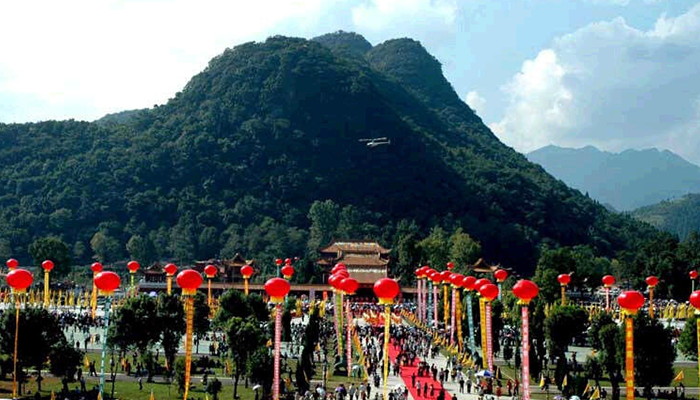
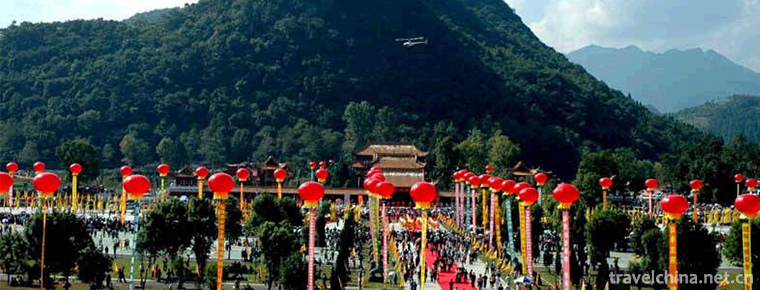
Sacrifice to Emperor Shun
-
Stirfried Shrimps with Longjing Tea Leaves
Lobwell shrimp is a famous Hangzhou dish with a strong local flavor. It is made of lobwell tea and shrimp before and after the Qingming Festival.
Views: 213 Time 2018-10-27 -
Boiled Chinese flowering cabbage
Boiled cabbage is a traditional dish in Guangdong province. It is a Cantonese cuisine. This dish is crisp and tender in quality, unique in flavor and rich in nutrition.
Views: 176 Time 2018-11-02 -
Shanghai Science and Technology Museum
Shanghai Science and Technology Museum is a comprehensive natural science and technology museum with Chinese characteristics, times characteristics and Shanghai characteristics
Views: 533 Time 2018-12-05 -
Central Radio and Television Tower
The Central Radio and Television Tower, now a national 4A scenic spot, is located on the west side of West Third Ring Road, Haidian District, Beijing. Near the Space Bridge, it faces beautiful Yuyuant
Views: 160 Time 2018-12-22 -
Nanshan Bamboo Sea Scenic Area
Tianmu Hunan Shanzhuhai Scenic Area is located in Liyang, Jiangsu Province, which is the junction of Jiangsu and Anhui Provinces. It is a national 5A scenic spot.
Views: 279 Time 2018-12-31 -
Bian Que Temple Tourist Area
Bian Que Temple, also known as Bian Que Temple, is situated at the foot of Que Mountain, 26 kilometers west of Neiqiu County Town. It is an ancient building group to worship and worship the Chinese me
Views: 127 Time 2019-01-03 -
Brodo
Buyi Opera, a local traditional drama in Ceheng County, Guizhou Province, is one of the national intangible cultural heritage.
Views: 160 Time 2019-04-04 -
Sintering Techniques of Cizhou Kiln
Cizhou kiln firing technology, the local traditional firing technology of Fengfeng mining area in Hebei Province, is one of the national intangible cultural heritage.
Views: 127 Time 2019-04-22 -
Sebin Festival of Ewenki Nationality
"Serbin" is an Ewenki language, meaning "happy and peaceful". Sebin Festival is a traditional festival of the Ewenki people. On Sebin Festival, Ewenki hunters gather together
Views: 181 Time 2019-04-28 -
Ancient dance Lao Gu dance
Ancient dance, the meaning of "breaking through the barrier" in Li language, is called "ancestor-telling" in ancient books. The ancestor worship originated from the primitive socie
Views: 155 Time 2019-05-11 -
Wawushan National Forest Park
Wawushan National Forest Park is located in Hongya County, Meishan City, west of Sichuan Basin. It is 180 kilometers away from Chengdu and 100 kilometers away from Leshan. As of 1993, the park covers an area of 65869.80 hectares, rich in vegetation resources
Views: 128 Time 2020-10-15 -
Suining social security
By the end of 2019, there were 23400 registered unemployed people in Suining, with the registered unemployment rate of 3.62%. 855000 people participated in the basic endowment insurance for urban employees, an increase of 114800 over the end of last year.
Views: 150 Time 2020-12-16
